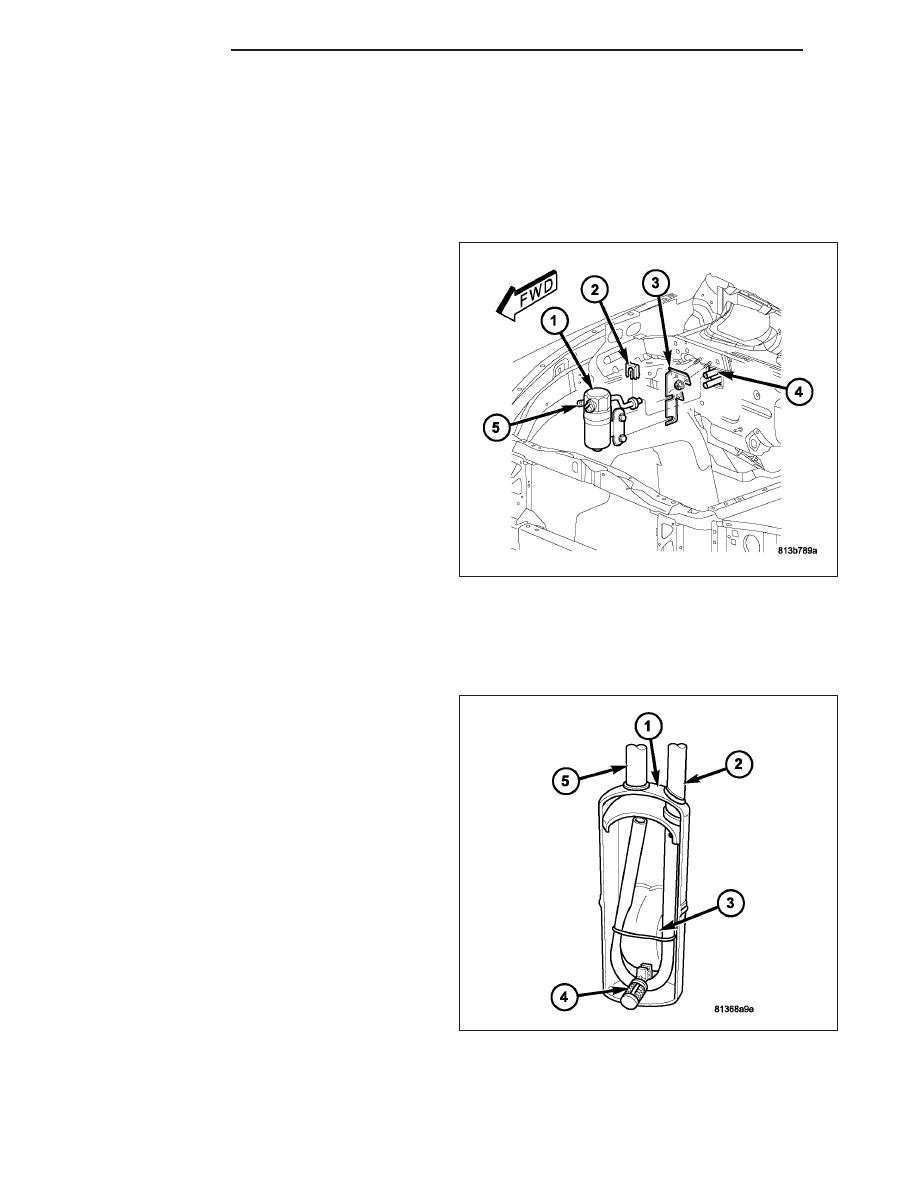Content .. 1294 1295 1296 1297 ..
Dodge Dakota (ND). Manual - part 1296

8. Disconnect the charging station and manifold gauge set from the refrigerant system service ports.
9. Reinstall the caps onto the refrigerant system service ports.
ACCUMULATOR-A/C
DESCRIPTION
The A/C accumulator (1) is mounted in the engine
compartment between the evaporator outlet tube (4)
and the A/C suction line and includes the low- side
service port (5). An integral mounting bracket secures
the accumulator to the dash panel bracket (3). A
spring-lock type quick-connect fitting is used to con-
nect the accumulator to the evaporator outlet tube.
CAUTION: Use only O-ring seals specified for the
vehicle. Failure to use the correct O-ring seals will
cause the refrigerant system connections to leak.
The A/C accumulator has no serviceable parts except
for the rubber O-ring seals, gasket, low-side service
port valve and cap and the secondary retaining clip
(2). The O-ring seals used on the connections are
made from a special type of rubber not affected by
R-134a refrigerant. The O-ring seals and gasket must
be
replaced
whenever
the
A/C
accumulator
is
removed and installed.
The A/C accumulator cannot be repaired and, if faulty or damaged, it must be replaced.
OPERATION
NOTE: Typical A/C accumulator shown.
Refrigerant enters the A/C accumulator (1) mostly as a
low pressure vapor through the inlet tube (2). Any liq-
uid, oil-laden refrigerant falls to the bottom of the can-
ister, which acts as a separator. A desiccant bag (3) is
mounted inside the accumulator canister to absorb
any moisture which may have entered and become
trapped within the refrigerant system A filter (4) is also
mounted inside the canister to trap any foreign mate-
rial that may have entered the refrigerant system dur-
ing assembly. The low pressure vapor exits the A/C
accumulator through the outlet tube (5).
The A/C accumulator cannot be repaired. If the A/C
accumulator is faulty or damaged, or if the refrigerant
system has been contaminated or left open to the
atmosphere for an indeterminable period or if the A/C
compressor has failed, it must be replaced.
24 - 182
PLUMBING
ND